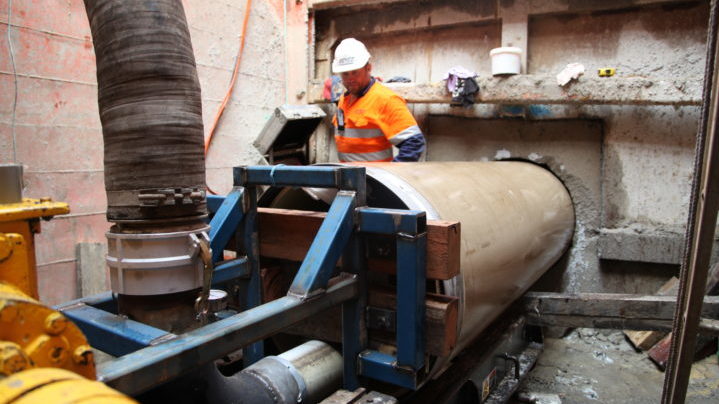For larger microtunnelling machines, German standards quote 50mm from the design line. However, some contractors feel this tolerance is too restrictive for large machines – such as say an AVN 2400 which could weigh some 50 tonnes – especially when tunnelling through soft, mixed soils. When using such machines, there is limited data that contractors can access to assess ground conditions, so ultimately accuracy will come down to experience and ensuring the client understands the achievable installation tolerance.
The major problem with projects where the microtunnelling machine is cutting through soft, mixed soil, is that there is not really an effective cutter available to use which caters to both ground types. Due to this, whichever cutter the contractor selects is going to have limitations because while it will need to allow for soft and hard ground, it’s not going to be good at either. As a result, this will affect tolerances which may be greater than the quoted standards.
While, we normally run in a smaller diameter – 2.4 – we’ve got more options available than those running larger machines. The Vermeer AXIS allows us to run a pilot line so that we can physically see and assess the ground conditions, and make design and cutter choices which will achieve the best accuracy and reduce the chances of complications arising. However, these capabilities are not available for larger machines like the AVN’s, and they have to run a direct jack with only the geotechnical information available to guide design and cutter decisions.
The key for operators of larger microtunnelling machines is that the designer needs to be aware of equipment capabilities, and ensure that realistic expectations for the job are understood upfront to make sure that an outcome is achieved that both the contractor and client are comfortable with. Contractors who have a greater amount of experience with the machine and different ground conditions will be more likely to achieve tighter tolerances and results expected by the client than contractors who don’t have this depth of experience and perhaps don’t fully understand all the risks that they’re taking on in advance. Either way a good contractor would automatically be talking to the customer about tolerances before the job’s even commenced.

